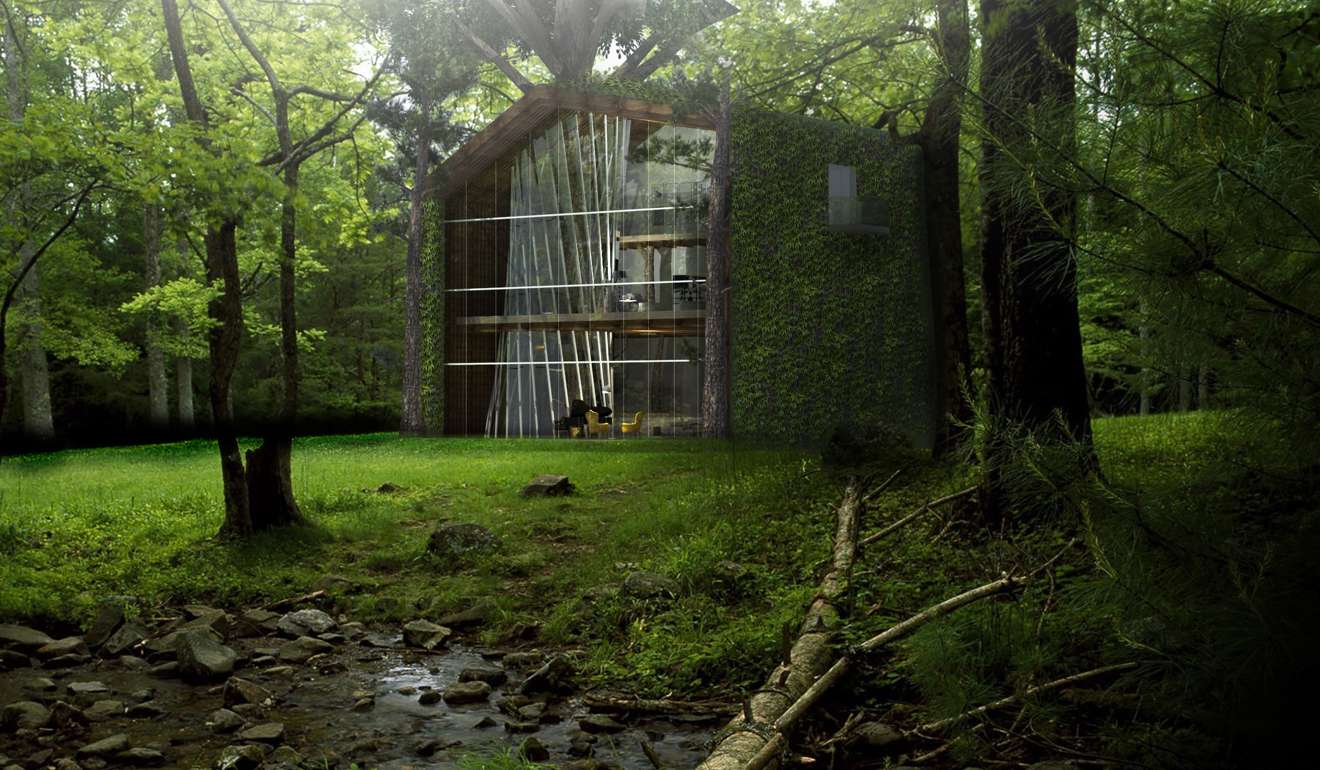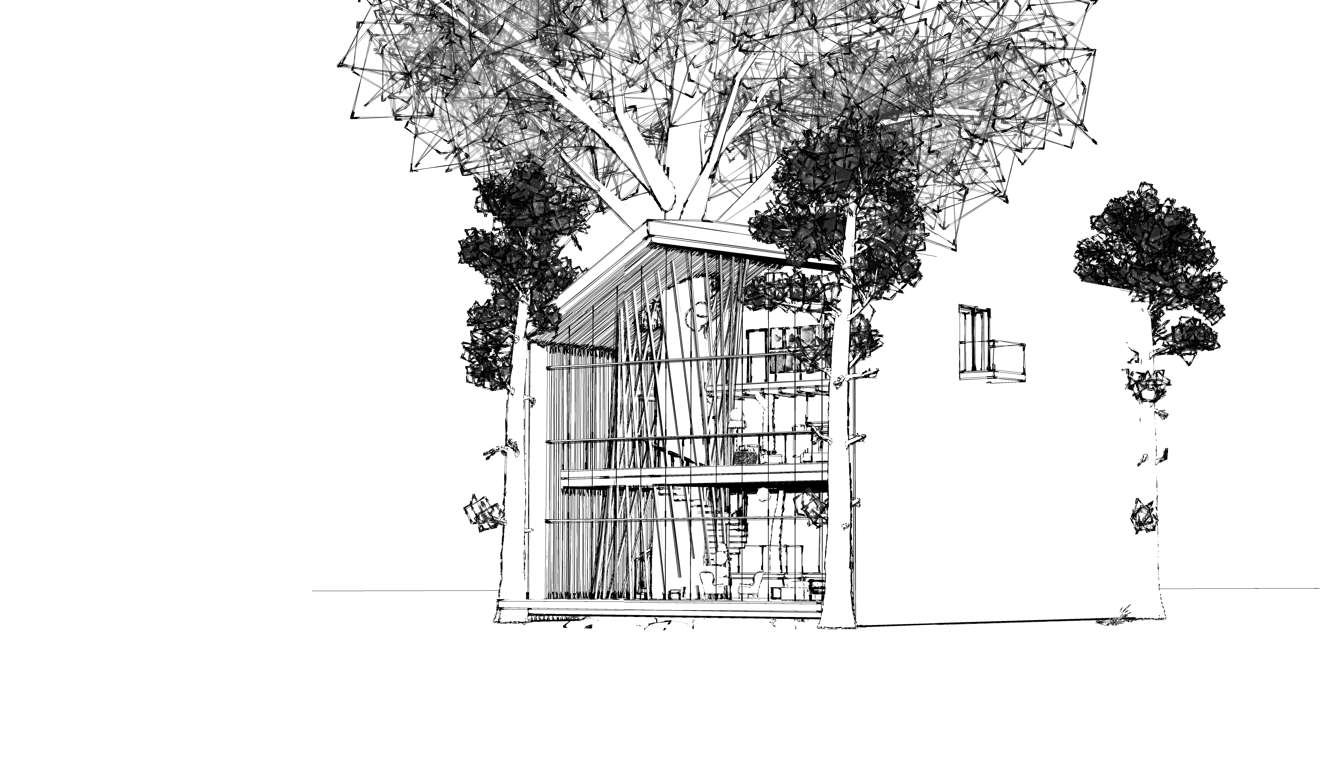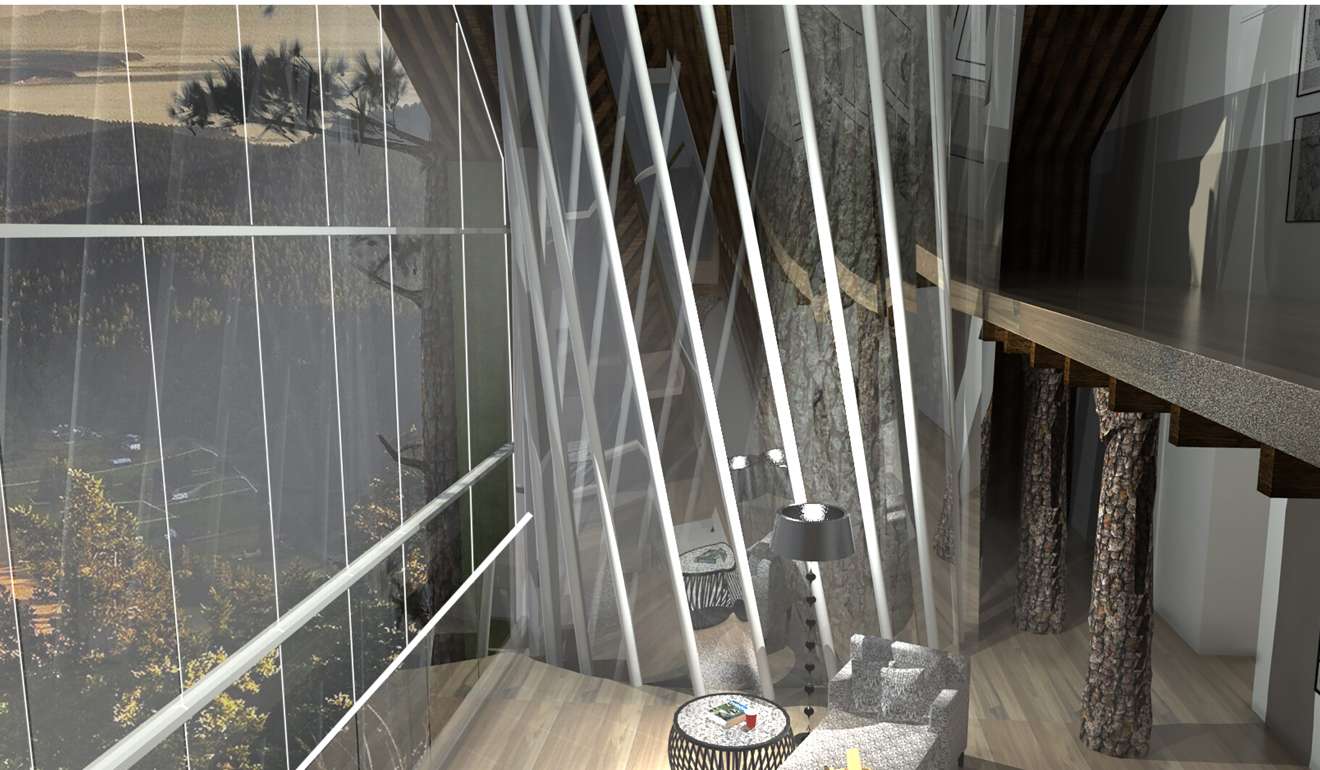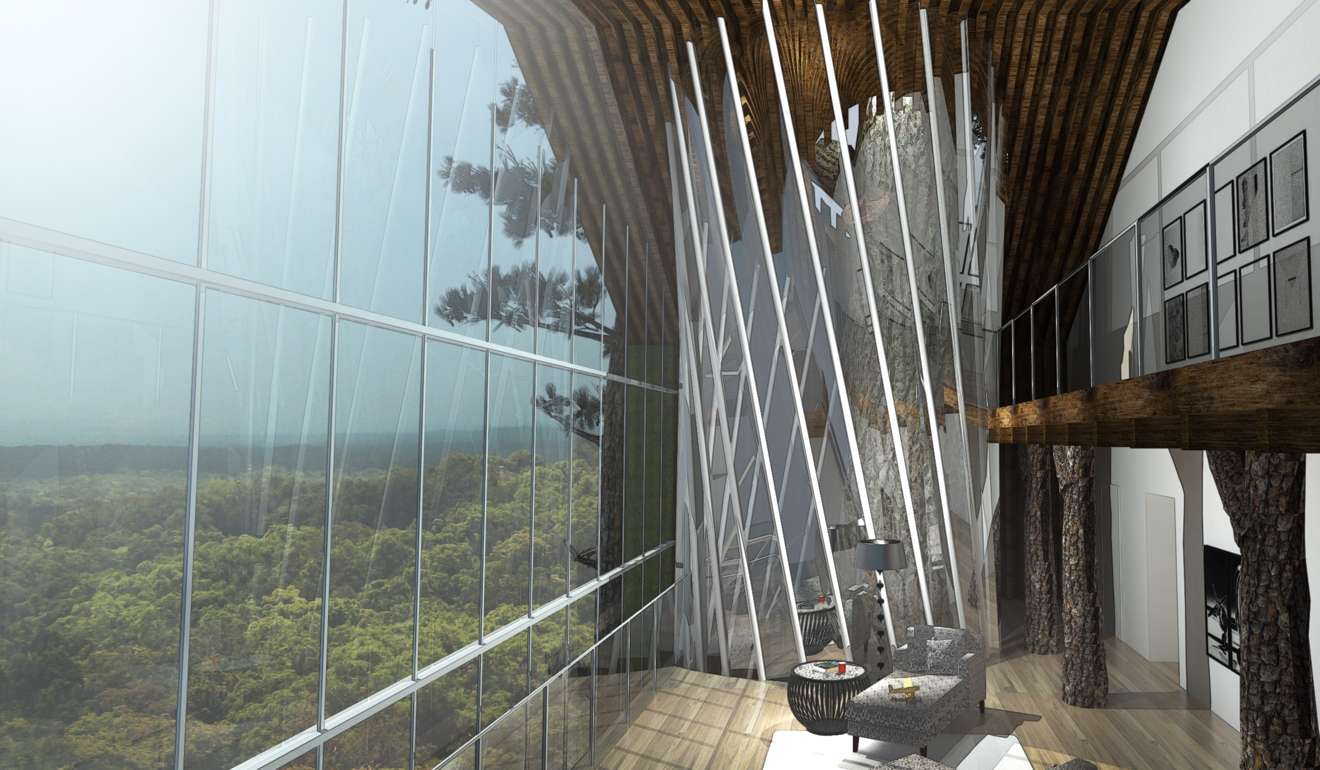This HK$19 million eco-friendly treehouse collects water and regulates temperature
The treehouse proves that urban development and environmental protection need not be incompatible

Modern urban development and environmental protection seem to be two opposing concepts that cannot comfortably co-exist: the demands of one must be subordinated to those of the other.
This is because “modern construction methods are often energy intensive, which implies high carbon emissions ... accelerating global climate change – which is known to be irreversible,” says Dr Anthony Leung, a Hong Kong-born senior lecturer in civil engineeringat the University of Dundee, Scotland.
Modernisation as a process is continuing and unstoppable but, according to Leung, it is not always impossible to go green. To combat the negative effects of modernisation on the environment, Leung has come up with a sustainable treehouse design which makes use of advanced engineering concepts, all under a green roof.
“Civil engineers are responsible for developing more innovative and low carbon emissions construction techniques, enhancing the engineering sustainability and the resilience of civil infrastructure,” Leung says.
His approach to building a treehouse involves “working with” nature, rather than against it. “Living [in harmony] with [the] natural environment has multiple potential benefits that have, however, been undermined ... by the power of nature in the past,” he says.

Leung’s two-storey treehouse uses basic structural components. The building’s supporting columns are living evergreen mature trees.

“Structurally speaking, a tree trunk [of] sufficient diameter is strong and stiff against both compression and tension, [and can] carry and then transmit floor loads to the foundation soil,” he says. With this approach, no wood is lumbered for space and residents can feel at home in nature.

Keeping a house warm usually involves producing greenhouse gas emissions, which contribute towards raising the global temperature. Leung’s treehouse design, however, has a natural temperature regulation system, which consists of having climbing plants on the exterior walls, plus wooden floor slabs inside, which have excellent thermal insulation properties.

Extra protection is provided by the tree canopy, which serves as a natural shelter, shielding the building from sun, snow and rain. Grass is used to create a green roof for collecting rain water and regulating urban run-off. The run-off water is directed to a mini-wastewater treatment plant where it is filtered for household use.
Any organic waste generated within the house is collected and filtered, and is used to provide nutrition to the trees.

From top to bottom, the treehouse functions on a self-maintaining cycle. Leung describes the design in terms of it being “an example of how we could borrow the power of nature to create natural shelter for human beings in a modern, yet environmentally- and ecologically-friendly way.”
He adds: “It’s also a moment of paradigm shift for engineers to develop more innovative construction principles and methods that not only protect our natural environmental, but also work with it to create a more sustainable and resilient built environment [with minimal impact on] climate change.”

BREAKDOWN OF COSTS
CONSTRUCTION: HK$5 MILLION
INTERIOR DESIGN FEE AND CONSULTATION: HK$7 MILLION
FURNISHINGS: HK$1 MILLION
RECYCLING SYSTEM: HK$4 MILLION
MECHANICAL AND ELECTRONIC SYSTEMS: HK$2 MILLION
TOTAL: HK$19 MILLION

Illustration: Anzon Wong
Want more articles like this? Follow STYLE on Facebook